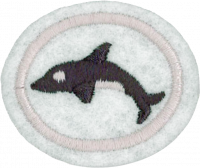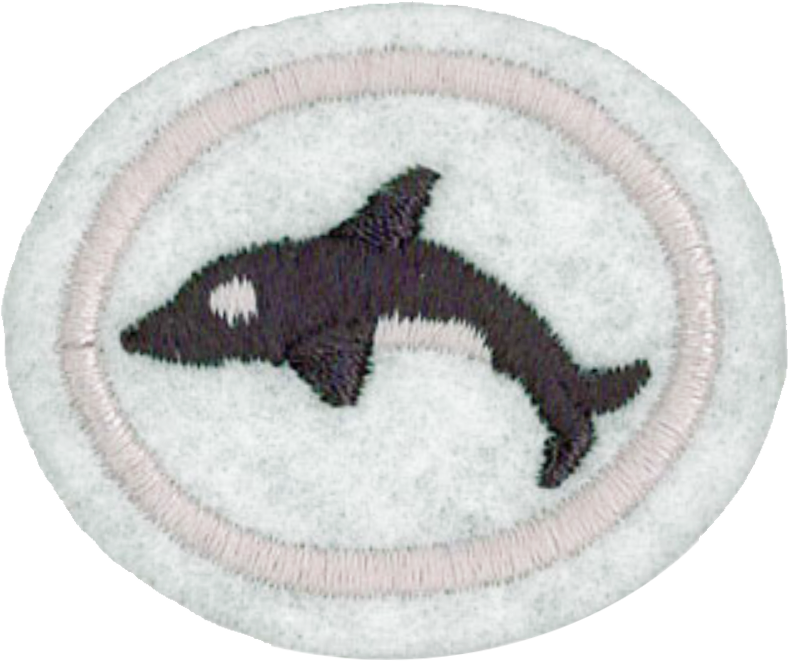Difference between revisions of "AY Honors/Marine Mammals/Answer Key/es"
(Created page with "</noinclude> {{:Adventist Youth Honors Answer Book/Species_Account/Odobenus_rosmarus/es}}") |
(Updating to match new version of source page) |
||
| (16 intermediate revisions by 2 users not shown) | |||
| Line 1: | Line 1: | ||
{{HonorSubpage}} | {{HonorSubpage}} | ||
<!--{{Honor_Master|honor={{#titleparts:{{PAGENAME}}|1|3}}|master=Zoology|group=required}}--> | <!--{{Honor_Master|honor={{#titleparts:{{PAGENAME}}|1|3}}|master=Zoology|group=required}}--> | ||
| − | <section begin="Body" /> | + | <section begin="Body" /> |
{{ansreq|page={{#titleparts:{{PAGENAME}}|2|1}}|num=1}} | {{ansreq|page={{#titleparts:{{PAGENAME}}|2|1}}|num=1}} | ||
<noinclude></noinclude> | <noinclude></noinclude> | ||
| Line 9: | Line 9: | ||
{{ansreq|page={{#titleparts:{{PAGENAME}}|2|1}}|num=1a}} <!--T:2--> | {{ansreq|page={{#titleparts:{{PAGENAME}}|2|1}}|num=1a}} <!--T:2--> | ||
<noinclude></noinclude> | <noinclude></noinclude> | ||
| − | {{: | + | {{:AY Honors/Species Account/Delphinapterus leucas/es}} |
| − | {{: | + | {{:AY Honors/Species Account/Monodon monoceros/es}} |
| − | {{: | + | {{:AY Honors/Species Account/Physeter macrocephalus/es}} |
| − | {{: | + | {{:AY Honors/Species Account/Kogia breviceps/es}} |
| − | {{: | + | {{:AY Honors/Species Account/Berardius/es}} |
| − | {{: | + | {{:AY Honors/Species_Account/Hyperoodon/es}} |
| − | {{: | + | {{:AY Honors/Species Account/Ziphius cavirostris/es}} |
<noinclude></noinclude> | <noinclude></noinclude> | ||
| Line 21: | Line 21: | ||
{{ansreq|page={{#titleparts:{{PAGENAME}}|2|1}}|num=1b}} <!--T:3--> | {{ansreq|page={{#titleparts:{{PAGENAME}}|2|1}}|num=1b}} <!--T:3--> | ||
<noinclude></noinclude> | <noinclude></noinclude> | ||
| − | {{: | + | {{:AY Honors/Species Account/Balaenoptera musculus/es}} |
| − | {{: | + | {{:AY Honors/Species Account/Balaena mysticetus/es}} |
| − | {{: | + | {{:AY Honors/Species Account/Megaptera novaeangliae/es}} |
| − | {{: | + | {{:AY Honors/Species Account/Eschrichtius robustus/es}}{{:AY Honors/SpeciesAY HonorsAccount/Caperea marginata/es}} |
<noinclude></noinclude> | <noinclude></noinclude> | ||
| Line 31: | Line 31: | ||
<noinclude></noinclude> | <noinclude></noinclude> | ||
| − | {{: | + | {{:AY Honors/Species Account/Monachus schauinslandi/es}} |
| − | {{: | + | {{:AY Honors/Species Account/Mirounga/es}} |
| − | {{: | + | {{:AY Honors/Species Account/Hydrurga leptonyx/es}} |
| − | {{: | + | {{:AY Honors/Species Account/Halichoerus grypus/es}} |
| − | |||
<noinclude></noinclude> | <noinclude></noinclude> | ||
| Line 54: | Line 53: | ||
{{ansreq|page={{#titleparts:{{PAGENAME}}|2|1}}|num=1e}} <!--T:11--> | {{ansreq|page={{#titleparts:{{PAGENAME}}|2|1}}|num=1e}} <!--T:11--> | ||
<noinclude></noinclude> | <noinclude></noinclude> | ||
| − | {{: | + | {{:AY Honors/Species Account/Orcinus orca/es}} |
| − | {{: | + | {{:AY Honors/Species Account/Tursiops truncatus/es}} |
| − | {{: | + | {{:AY Honors/Species Account/Delphinus delphis/es}} |
| − | {{: | + | {{:AY Honors/Species_Account/Neophocaena_phocaenoides/es}} |
| − | {{: | + | {{:AY Honors/Species Account/Phocoena phocaena/es}} |
<noinclude></noinclude> | <noinclude></noinclude> | ||
| Line 64: | Line 63: | ||
{{ansreq|page={{#titleparts:{{PAGENAME}}|2|1}}|num=1f}} <!--T:12--> | {{ansreq|page={{#titleparts:{{PAGENAME}}|2|1}}|num=1f}} <!--T:12--> | ||
<noinclude></noinclude> | <noinclude></noinclude> | ||
| − | {{: | + | {{:AY Honors/Species Account/Odobenus rosmarus/es}} |
| − | + | <noinclude></noinclude> | |
| − | <noinclude | ||
| − | |||
{{CloseReq}} <!-- 1f --> | {{CloseReq}} <!-- 1f --> | ||
{{ansreq|page={{#titleparts:{{PAGENAME}}|2|1}}|num=1g}} <!--T:13--> | {{ansreq|page={{#titleparts:{{PAGENAME}}|2|1}}|num=1g}} <!--T:13--> | ||
<noinclude></noinclude> | <noinclude></noinclude> | ||
| − | {{: | + | {{:AY Honors/Species Account/Enhydra lutris/es}} |
<noinclude></noinclude> | <noinclude></noinclude> | ||
| Line 79: | Line 76: | ||
<noinclude></noinclude> | <noinclude></noinclude> | ||
| − | {{: | + | {{:AY Honors/Species Account/Trichechus inunguis/es}} |
| − | {{: | + | {{:AY Honors/Species Account/Trichechus manatus/es}} |
| − | {{: | + | {{:AY Honors/Species Account/Trichechus senegalensis/es}} |
<noinclude></noinclude> | <noinclude></noinclude> | ||
| Line 112: | Line 109: | ||
<noinclude></noinclude> | <noinclude></noinclude> | ||
| − | + | {{clear}} | |
| − | |||
| − | |||
| − | + | {{clear}} | |
| − | |||
| − | |||
| − | + | <noinclude></noinclude> | |
| − | <noinclude | ||
| − | |||
{{CloseReq}} <!-- 4b --> | {{CloseReq}} <!-- 4b --> | ||
{{ansreq|page={{#titleparts:{{PAGENAME}}|2|1}}|num=4c}} <!--T:23--> | {{ansreq|page={{#titleparts:{{PAGENAME}}|2|1}}|num=4c}} <!--T:23--> | ||
| − | <noinclude> | + | <noinclude></noinclude> |
| − | </noinclude | ||
| − | |||
| − | + | {{clear}} | |
| − | |||
| − | |||
| − | + | <noinclude></noinclude> | |
| − | <noinclude | ||
| − | |||
{{CloseReq}} <!-- 4c --> | {{CloseReq}} <!-- 4c --> | ||
{{ansreq|page={{#titleparts:{{PAGENAME}}|2|1}}|num=4d}} <!--T:25--> | {{ansreq|page={{#titleparts:{{PAGENAME}}|2|1}}|num=4d}} <!--T:25--> | ||
| − | <noinclude> | + | <noinclude></noinclude> |
| − | </noinclude | ||
| − | |||
| − | |||
| − | |||
| − | + | <noinclude></noinclude> | |
| − | <noinclude | ||
| − | |||
{{CloseReq}} <!-- 4d --> | {{CloseReq}} <!-- 4d --> | ||
{{ansreq|page={{#titleparts:{{PAGENAME}}|2|1}}|num=4e}} <!--T:26--> | {{ansreq|page={{#titleparts:{{PAGENAME}}|2|1}}|num=4e}} <!--T:26--> | ||
| − | <noinclude> | + | <noinclude></noinclude> |
| − | </noinclude | ||
| − | |||
| − | |||
| − | + | <noinclude></noinclude> | |
| − | <noinclude | ||
| − | |||
{{CloseReq}} <!-- 4e --> | {{CloseReq}} <!-- 4e --> | ||
{{ansreq|page={{#titleparts:{{PAGENAME}}|2|1}}|num=4f}} <!--T:27--> | {{ansreq|page={{#titleparts:{{PAGENAME}}|2|1}}|num=4f}} <!--T:27--> | ||
| − | <noinclude> | + | <noinclude></noinclude> |
| − | </noinclude | ||
| − | |||
| − | |||
| − | + | <noinclude></noinclude> | |
| − | <noinclude | ||
| − | |||
{{CloseReq}} <!-- 4f --> | {{CloseReq}} <!-- 4f --> | ||
{{ansreq|page={{#titleparts:{{PAGENAME}}|2|1}}|num=4g}} <!--T:28--> | {{ansreq|page={{#titleparts:{{PAGENAME}}|2|1}}|num=4g}} <!--T:28--> | ||
| − | <noinclude> | + | <noinclude></noinclude> |
| − | </noinclude | ||
| − | |||
| − | |||
| − | + | <noinclude></noinclude> | |
| − | <noinclude | ||
| − | |||
{{CloseReq}} <!-- 4g --> | {{CloseReq}} <!-- 4g --> | ||
{{CloseReq}} <!-- 4 --> | {{CloseReq}} <!-- 4 --> | ||
{{ansreq|page={{#titleparts:{{PAGENAME}}|2|1}}|num=5}} | {{ansreq|page={{#titleparts:{{PAGENAME}}|2|1}}|num=5}} | ||
| − | <noinclude> | + | <noinclude></noinclude> |
| − | </noinclude> | + | <!-- 5. Dibujar una cadena alimenticia de dos mamíferos marinos. --> |
| − | <!-- 5. | ||
| − | |||
| − | |||
| − | + | {{clear}} | |
| − | |||
| − | |||
| − | + | {{clear}} | |
| − | |||
| − | |||
| − | + | {{clear}} | |
| − | |||
| − | |||
| − | + | <noinclude></noinclude> | |
| − | <noinclude | ||
| − | |||
{{CloseReq}} <!-- 5 --> | {{CloseReq}} <!-- 5 --> | ||
{{ansreq|page={{#titleparts:{{PAGENAME}}|2|1}}|num=6}} | {{ansreq|page={{#titleparts:{{PAGENAME}}|2|1}}|num=6}} | ||
| − | <noinclude> | + | <noinclude></noinclude> |
| − | </noinclude> | + | <!-- 6. ¿Cuál es el propósito de la grasa de ballena? --> |
| − | <!-- 6. | ||
| − | |||
| − | |||
| − | + | {{clear}} | |
| − | |||
| − | |||
| − | + | <noinclude></noinclude> | |
| − | <noinclude | ||
| − | |||
{{CloseReq}} <!-- 6 --> | {{CloseReq}} <!-- 6 --> | ||
{{ansreq|page={{#titleparts:{{PAGENAME}}|2|1}}|num=7}} | {{ansreq|page={{#titleparts:{{PAGENAME}}|2|1}}|num=7}} | ||
| − | <noinclude> | + | <noinclude></noinclude> |
| − | </noinclude> | + | <!-- 7. Conocer dos razones por qué las focas son cazadas. --> |
| − | <!-- 7. | ||
| − | |||
| − | |||
| − | + | <noinclude></noinclude> | |
| − | <noinclude | ||
| − | |||
{{CloseReq}} <!-- 7 --> | {{CloseReq}} <!-- 7 --> | ||
{{ansreq|page={{#titleparts:{{PAGENAME}}|2|1}}|num=8}} | {{ansreq|page={{#titleparts:{{PAGENAME}}|2|1}}|num=8}} | ||
| − | <noinclude> | + | <noinclude></noinclude> |
| − | </noinclude> | + | <!-- 8. Describir por qué las focas y los delfines pueden moverse con tana rapidez en el agua. --> |
| − | <!-- 8. | ||
| − | |||
| − | |||
| − | + | <noinclude></noinclude> | |
| − | <noinclude | ||
| − | |||
{{CloseReq}} <!-- 8 --> | {{CloseReq}} <!-- 8 --> | ||
{{ansreq|page={{#titleparts:{{PAGENAME}}|2|1}}|num=9}} | {{ansreq|page={{#titleparts:{{PAGENAME}}|2|1}}|num=9}} | ||
| − | <noinclude> | + | <noinclude></noinclude> |
| − | </noinclude> | + | <!-- 9. Realizar una de las siguientes actividades: --> |
| − | <!-- 9. | + | <noinclude></noinclude> |
| − | <noinclude | ||
| − | |||
{{ansreq|page={{#titleparts:{{PAGENAME}}|2|1}}|num=9a}} | {{ansreq|page={{#titleparts:{{PAGENAME}}|2|1}}|num=9a}} | ||
| − | <noinclude> | + | <noinclude></noinclude> |
| − | </noinclude | ||
| − | |||
| − | |||
| − | |||
{{AY Honors/Zoo Visit}} | {{AY Honors/Zoo Visit}} | ||
| − | |||
| − | + | <noinclude></noinclude> | |
| − | <noinclude | ||
| − | |||
{{CloseReq}} <!-- 9a --> | {{CloseReq}} <!-- 9a --> | ||
{{ansreq|page={{#titleparts:{{PAGENAME}}|2|1}}|num=9b}} <!--T:39--> | {{ansreq|page={{#titleparts:{{PAGENAME}}|2|1}}|num=9b}} <!--T:39--> | ||
| − | <noinclude> | + | <noinclude></noinclude> |
| − | </noinclude | ||
| − | |||
| − | |||
| − | |||
| − | |||
| − | |||
| − | |||
| − | |||
| − | |||
| − | |||
| − | + | <noinclude></noinclude> | |
| − | <noinclude | ||
| − | |||
{{CloseReq}} <!-- 9b --> | {{CloseReq}} <!-- 9b --> | ||
{{ansreq|page={{#titleparts:{{PAGENAME}}|2|1}}|num=9c}} <!--T:40--> | {{ansreq|page={{#titleparts:{{PAGENAME}}|2|1}}|num=9c}} <!--T:40--> | ||
| − | <noinclude> | + | <noinclude></noinclude> |
| − | </noinclude | ||
| − | |||
| − | |||
| − | |||
| − | |||
| − | |||
| − | + | <noinclude></noinclude> | |
| − | <noinclude | ||
| − | |||
{{CloseReq}} <!-- 9c --> | {{CloseReq}} <!-- 9c --> | ||
{{CloseReq}} <!-- 9 --> | {{CloseReq}} <!-- 9 --> | ||
| − | <noinclude> | + | <noinclude></noinclude> |
| − | </noinclude> | + | ==Referencias== |
| − | == | + | <noinclude></noinclude> |
| − | + | ||
| − | + | [[Category:Adventist Youth Honors Answer Book/Do at home{{GetLangSuffix}}]] | |
| − | [[Category:Adventist Youth Honors Answer Book/Do at home | ||
| − | |||
| − | |||
{{CloseHonorPage}} | {{CloseHonorPage}} | ||
Latest revision as of 02:34, 4 January 2023
Nivel de destreza
2
Año
1991
Version
17.05.2024
Autoridad de aprobación
Asociación General
1
1a
AY Honors/Species Account/Delphinapterus leucas/es
AY Honors/Species Account/Monodon monoceros/es
AY Honors/Species Account/Physeter macrocephalus/es
AY Honors/Species Account/Kogia breviceps/es
AY Honors/Species Account/Berardius/es
AY Honors/Species Account/Hyperoodon/es
AY Honors/Species Account/Ziphius cavirostris/es
1b
AY Honors/Species Account/Balaenoptera musculus/es
AY Honors/Species Account/Balaena mysticetus/es
AY Honors/Species Account/Megaptera novaeangliae/es
AY Honors/Species Account/Eschrichtius robustus/esAY Honors/SpeciesAY HonorsAccount/Caperea marginata/es
1c
AY Honors/Species Account/Monachus schauinslandi/es AY Honors/Species Account/Mirounga/es AY Honors/Species Account/Hydrurga leptonyx/es AY Honors/Species Account/Halichoerus grypus/es
1d
1e
AY Honors/Species Account/Orcinus orca/es
AY Honors/Species Account/Tursiops truncatus/es
AY Honors/Species Account/Delphinus delphis/es
AY Honors/Species Account/Neophocaena phocaenoides/es
AY Honors/Species Account/Phocoena phocaena/es
1f
1g
1h
AY Honors/Species Account/Trichechus inunguis/es AY Honors/Species Account/Trichechus manatus/es AY Honors/Species Account/Trichechus senegalensis/es
2
3
4
4a
4b
4c
4d
4e
4f
4g
5
6
7
8
9
9a
Si piensa visitar un zoológico o acuario, tenga en cuenta que hay varias especialidades que tienen requisitos que se pueden cumplir visitando un zoológico o acuario. Los individuos pueden trabajar en varias especialidades en una visita, o partes de su grupo pueden trabajar en diferentes especialidades durante la misma visita.
Aquí hay una lista de especialidades que tienen requisitos que se pueden cumplir visitando un zoológico o acuario:
Bosques templados caducifolios
Especies en peligro de extinción
9b
9c


